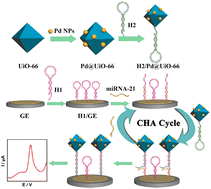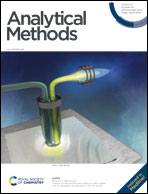Recent advances on the electrochemical and optical biosensing strategies for monitoring microRNA-21: a review
Abstract
The small non-coding RNA, microRNA-21 (miR-21), is dysregulated in various cancers and can be considered an appropriate target for therapeutic approaches. Therefore, the detection of miR-21 concentration is important in the diagnosis of diseases. Low specificity and the cost of materials are two necessary limitations in the traditional diagnosis method such as RT-PCR, northern blotting and microarray analysis. Biosensor technology can play an effective role in improving the quality of human life due to its capacity of rapid diagnosis, monitoring different markers, suitable sensitivity, and specificity. Moreover, bioanalytical systems have an essential role in the detection of biomolecules or miRNAs due to their critical features, including easy usage, portability, low cost and real-time analysis. Electrochemical biosensors based on novel nanomaterials and oligonucleotides can hybridize with miR-21 in different ranges. Moreover, optical biosensors and piezoelectric devices have been developed for miR-21 detection. In this study, we have evaluated different materials used in bioanalytical systems for miR-21 detection as well as various nanomaterials that offer improved electrodes for its detection.

- This article is part of the themed collection: Analytical Methods Review Articles 2022


 Please wait while we load your content...
Please wait while we load your content...